Insights into Apple's Upcoming VR/AR Headset: Latest Rumors and What to Expect
Apple is developing a VR/AR mixed-reality headset with advanced display technology and a custom operating system.
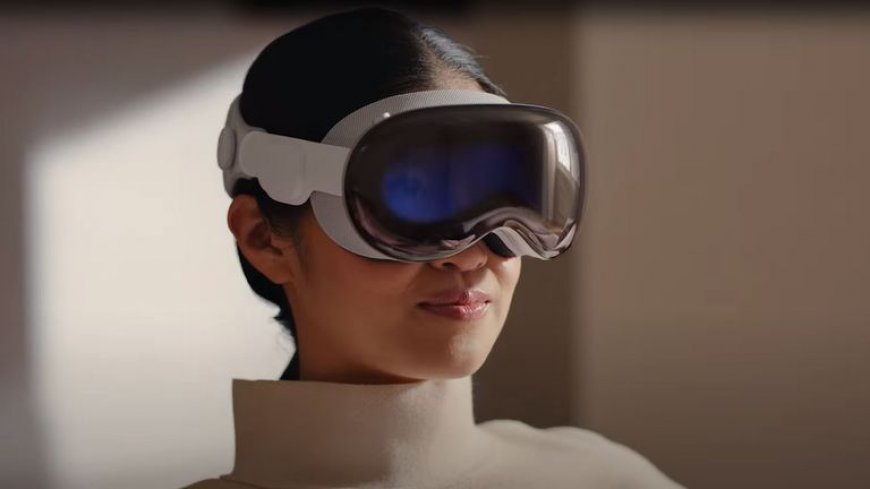
The Apple VR/AR mixed reality headset is one of those products that's perpetually rumored but never seems to materialize - though that could soon change. Apple hasn't officially announced the device, but we know the company has big plans for augmented reality. The VR/AR headset is the next step on that journey.
It's worth noting that the VR/AR headset is totally different from the rumored Apple Glasses. Those are said to be purely AR-focused and aren't likely to arrive anytime soon. Meanwhile, the VR/AR headset could be here as soon as 2023, and it's likely to compete with the Meta Quest 2, PSVR 2 and all the other best VR headsets.
We've seen several reports coming out regarding Apple VR/AR, including next-generation display technology and its potential price and release window. We've even heard rumors about the display for the Apple VR/AR Headset 2, the theoretical successor to Apple's still unannounced mixed reality headset.
Here's everything you need to know about the Apple VR/AR mixed reality headset that's expected to arrive at some point this year.
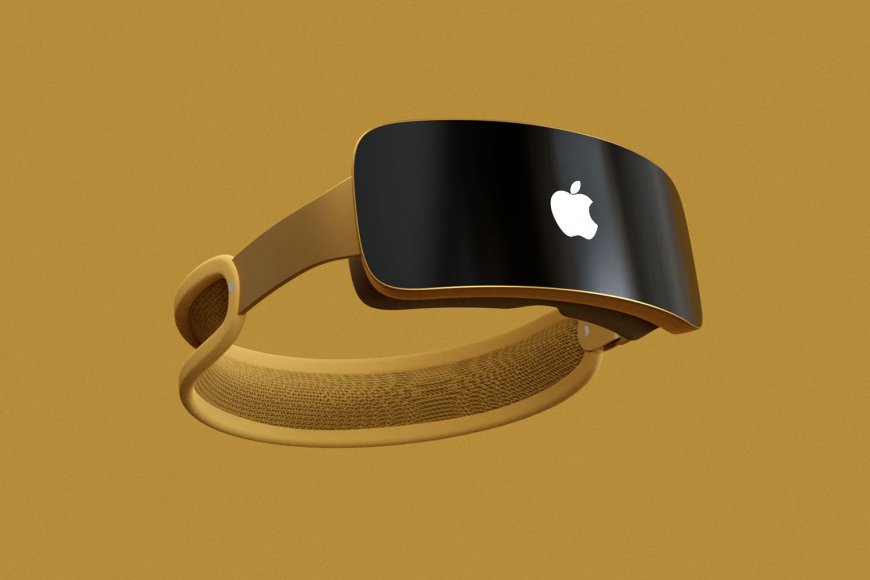
Apple VR/AR mixed-reality headset release date speculation
Going by the majority of rumors thus far, the Apple VR/AR headset has been tipped for a reveal this year, though when exactly is hard to pin down, with some rumors pointing towards a spring reveal while others have the headset's debut pegged for later on.
Bloomberg's Mark Gurman thinks the reveal will happen in June at Apple's WWDC 2023 event, as Apple races to address hardware and software issues.
Interestingly, The Financial Times(opens in new tab) reports that the Apple AR/VR headset is launching this year despite reservations from the Apple design team(opens in new tab) that the device is not yet ready for release. Apparently, the designers are pushing for a lighter-weight design but were overruled by COO Jeff Williams and CEO Tim Cook. Further reporting from the New York Times claims that several people working on the project aren't convinced it's the right move for Apple, despite general interest in AR/VR technology.
And surprisingly, we already have rumors for next-generation Apple VR/AR headsets, with Apple oracle and analyst Ming-Chi Kuo claiming(opens in new tab) there'll be high-end and low-end versions of a second-gen headset in 2025. We'd rather wait and see the first-gen headset first before we cast any weight behind such rumors.
Apple VR/AR mixed reality headset vs Apple Glass
According to reports, the Apple VR/AR mixed reality headset is designed to be a precursor to Apple Glass. The AR lenses are supposed to offer an "optical see-through AR experience," according to Ming-Chi Kuo. However, Apple Glasses may not arrive for a long time, with Apple reportedly delaying the project due to technical challenges.
In other words, based on everything we've heard, Apple Glass is designed to look and act like an ordinary lightweight pair of glasses. We're talking about glasses that are able to project information, and presumably imagery, onto the lenses.

The Apple VR/AR mixed reality headset is expected to be like a typical VR headset, but one with a number of exterior cameras and sensors that unlock bonus functionality.
That way Apple's VR and mixed reality headset can offer body tracking, and incorporate real-world environments in a virtual space. Plus, the Apple VR headset could incorporate a see-through experience that can deliver a form of augmented reality. So it's more like the Meta Quest Pro, rather than the VR-only Meta Quest 2.
Unlike the Meta Quest Pro, however, Apple may not be jumping on the 'metaverse' bandwagon. Mark Gurman has claimed that the Apple headset will be designed for short trips into VR. In fact, Apple is said to have declared the metaverse "off limits". Users will be able to use the mixed reality headset for communication, content viewing and gaming, but it won't be a device you wear all day, or as a replacement for real life.
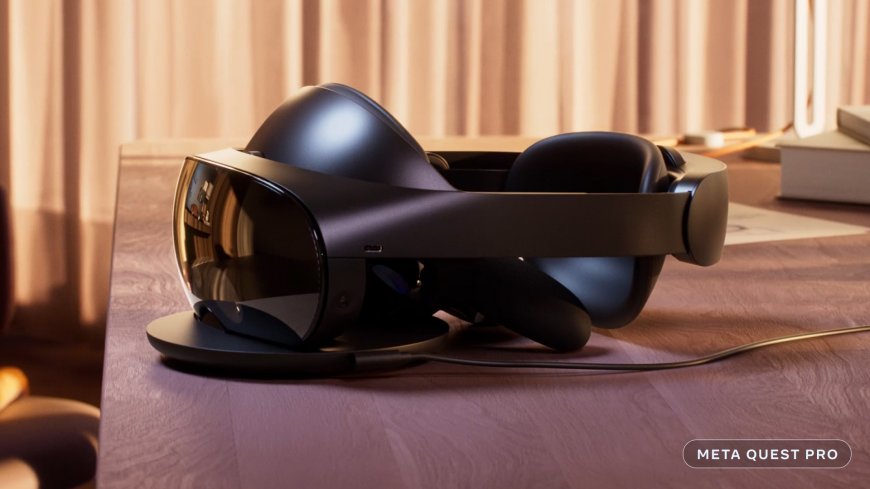
Still not sure what the difference between mixed reality, augmented reality and virtual reality actually is? We have an explainer that tells you exactly what mixed reality is and what Microsoft, Meta and Apple have planned for it.
Apple VR/AR mixed reality headset rumored price
Reports on the Apple VR/AR mixed reality headset price have been mixed. But rumors suggest a developer focus, so pricing may center around attracting programmers.
Tim Cook has spoken at length about how AR is Apple's end goal. The headset is reported to be the first stage in the company's wearable AR ambitions. The headset's main goal is reportedly to prepare developers for the launch of Apple Glass, and ensure the specs have app support for launch. Apple's main incentive is not to make money, and reports claim the headset's price will reflect that.
That being said, Mark Gurman has claimed the headset will be heavy on gaming, media consumption and communication, suggesting Apple is designing something with consumers in mind. Maybe this could mean a cheaper second-gen headset later. However, that doesn't necessarily mean the first-generation headset won't be expensive, or primarily designed for developer use.
While Apple's VR and mixed reality headset is supposed to be expensive, reports are divided on how expensive it's set to be.
A report from The Information claims that Apple's VR headset will be as high as $3,000. Gaming VR headsets rarely cost more than $1,000, though the Microsoft Hololens 2 does cost a whopping $3,500.
Mark Gurman claims that the headset could cost upwards of $2,000. That price tag is supposed to account for the headset's hardware, which could include the Apple M1 Pro chip, an extended development time and the usual increased markup applied to other Apple products.
However, Ming-Chi Kuo has now reported that the final price should be between $2,000 and $2,500. This has since been refuted by a Bloomberg report, claiming that the headset would indeed be priced at $3,000.
In any case, the cost of entry is going to be high and certainly a lot higher than other stand-alone VR headsets. For example, the Meta Quest 2 costs $300 by comparison.

Apple VR/AR mixed reality headset display rumors
The Information(opens in new tab)'s reported claims that the VR/AR headset will feature 12 tracking cameras that can feed information to two 8K displays in front of the user's eyes. On top of that, the headset will also reportedly feature LiDAR sensors. However, this report was contradicted by Display Supply Chain Consultants, or DSCC, which claims that Sony is making 4K 4000 x 4000 displays for Apple's headset with a 1.4-inch diagonal. It is important to know that in its comments DSCC did mention that LiDAR was still a possibility.
For those that don't know, LiDAR uses lasers to measure distance, which can gather the area of a space quickly and accurately. A device can use this info to better place objects in AR and has already been used this way on the high-end iPad Pro as well as the iPhone 14 Pro and iPhone 14 Pro Max.
DSCC also suggests that Apple might cram in three displays total inside its headset. There could be the two Sony-made 4K displays mentioned above, as well as one larger lower resolution AMOLED display on the back. This, according to the report, would allow Apple to create a foveated display.
A foveated display refers to the fovea that sits at the back of a person's eye, along the retina. The fovea helps with sharpening central vision. A foveated VR headset could use eye tracking to help focus an image on what the user is looking at while lowering the resolution around the periphery. This video by the YouTube channel SweViver(opens in new tab) does an excellent job explaining fixed foveated rendering (FFR).
There is some credence to the rumors of Sony developing the display panels for the mixed-reality Apple headset. Recent reports suggest that the Apple headset will use OLEDoS panels, which use silicon instead of glass substrates to create unbelievable resolutions. Sony, Samsung, and LG are all working on OLEDoS panels, with Sony and LG rumored to provide displays for the first generation of the Apple VR/AR headset and Samsung and LG to provide displays for the second generation.
Apple VR/AR mixed reality headset rumored features
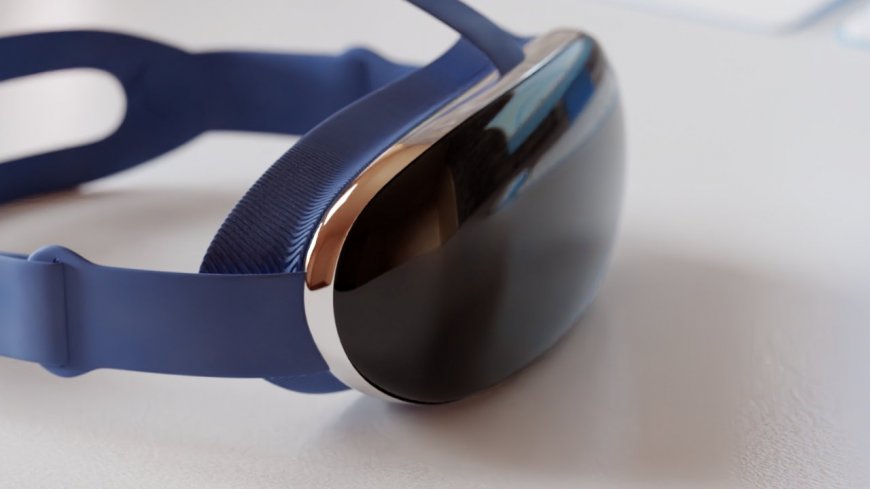
The main feature of the Apple headset is mixed reality. According to Mark Gurman, the headset will include external cameras which are currently being used to test features like hand-tracking and gesture control. Part of this includes the possibility of being able to type in the air with a virtual keyboard.
The hand-tracking and gesture control could also contribute heavily to the headset's rumored Continuity features, which were partially teased in a recent patent filing. According to the patent application, Continuity and Handoff will allow users to stare at a speaker to transfer music, respond to emails in mid-air and more, all from the VR/AR headset.
At least one report claimed that Apple isn't focusing on games for its AR/VR headset, however, more recent reports have refuted this — saying gaming and entertainment will be two of the headset's core features. This makes sense, since early adopters are pretty commonplace in the gaming community.
Rumors also suggest that the Apple VR/AR headset will not rely on sensors alone. Sources have told The Information that users will be able to wear a "thimble-like" device on their finger to help with hand tracking and other controls. The latest reports also claim that there will be a Digital Crown, similar to the one on AirPods Max, to switch between AR and VR modes.
A lot of power is going to be needed to keep all this going, and Gurman's report claims that the headset will feature Apple's "most advanced and powerful chips." Apparently, the chip inside Apple's VR headset will be more powerful than the newly-launched M1 Mac chip.
According to a later report from Gurman, the headset will come with the new M2 chip and 16GB of RAM. It may not be the most powerful chip in the Apple Silicon range, but it does offer a good balance of power and energy efficiency.
Speaking of specs, a newer report from Kuo has the headset tipped to get multiple processors, suggesting Apple won't be scrimping on power. Similarly, The Information(opens in new tab) reports that there will be two processors on board the headset, with the main processor the equivalent of the M2 chip that launched in 2022.
According to Kuo, all that hardware will also need a significant amount of power. To the point where the headset will apparently come with a 96W MacBook charger to keep everything powered on. It's also been suggested that an external battery pack may be necessary, which will offer 2 hours of battery life.
Not so long ago, Kuo also shared that the device could get hand gesture controls as well as object detection features, which could be enabled through "highly sensitive 3D sensing modules." Kup predicts that "the AR/MR headset can detect not only the position change of the user or other people’s hand and object in front of the user's eyes but also the dynamic detail change of the hand."
More details have emerged in another Information report about auto-adjusting lenses and a separate battery pack being part of the headset. Not having the battery built-in sounds a little inconvenient for using the headset, but being able to rely on the internals to adjust to your vision does sound welcome.
Apple's recent patent wins could also shed light on some other expected features, including finger gestures. Recent patent filings from Apple indicate that it wants to integrate wearables with its VR/AR mixed reality headset — and possibly Apple Glasses. These inventions would allow users to use wearables ranging from two Apple Watches to a VR glove to execute finger gestures. These gestures could allow users to do a range of tasks, from scrolling through pages to hanging up a phone call.
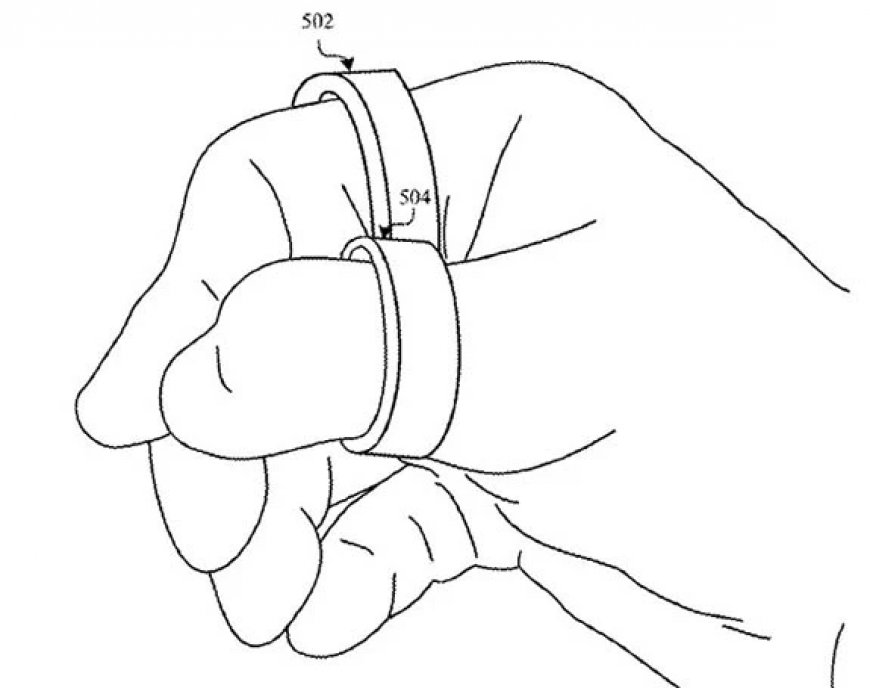
A patent discovered by Apple Insider(opens in new tab) reveals that Apple has been working on some smart rings, which can be used to track finger and hand movements. This could be employed with the VR and mixed reality headset, to boost the capabilities of the external cameras. The patent also mentions being able to detect objects the user is holding, including an Apple Pencil, and act accordingly.
Per analyst Ming-Chi Kuo, he believes that Apple will use "3P pancake lenses" that will have a folded design to allow light to reflect back and forth between the display and lenses. This could allow for a headset design that's compact and lightweight.
Ming-Chi Kuo also claims that the headset will come with Wi-Fi 6E support, which would allow it to connect to a separate device and transfer large amounts of data with low latency. This means the headset could allow a separate device, like an iPhone or Mac, to do all the hard work and beam it to the headset without the need for a physical cable.
Not doing all the processing in the headset itself will also mean Apple can help keep the weight low and preserve battery life for much longer than it would have lasted otherwise.
On top of all these possibilities, a report from The Information claims that Apple will add iris-scanning tech to the VR/AR headset. The idea is that the headset can authenticate the user as soon as they put it on, which will be beneficial for situations where multiple people share the same device. It may also be used to authenticate purchases, the same way Face ID and Touch ID are utilized on iOS devices.
If that wasn't enough, a new report from The Information claims that the Apple VR/AR headset will let users create their own apps — regardless of whether they know how to code or not. This feature will apparently run through Siri, allowing people to use the headset to scan real-world objects and transform them into digital assets. User-created apps will also be allowed to appear on the app store, though they will no doubt need to pass Apple's strict approvals process.
Apple VR/AR mixed reality headset design
According to a report by The Information from early 2021, the outlet received design sketches of what Apple's mixed reality headset might look like. This is apparently based on early prototype work by Apple engineers and may not reflect the final product.
Concept artist Ian Zelbo also created some renders of a possible headset design, based on The Information's leak from earlier in the year.
We also have potentially seen some Apple VR/AR components leaked — but we're skeptical that these are real. The purported camera or sensor array looks a lot like part of the microphone setup from the original HomePod. We won't know for sure until someone actually opens up one of the Apple headsets.
Regardless, with this being Apple, we'd expect the mixed-reality headset to sport a bit of slick industrial design with a lot of user ergonomics in mind.
For what it's worth, Ming-Chi Kou has claimed the Apple headset will weigh between 300 and 400 grams (a little less than a pound) when it debuts. A lighter version is in the works for a subsequent release, Kou adds.
Apple Glasses realityOS
A whole new device form factor requires a tweaked operating system, and it looks like that’s what Apple will be providing, with reference to “reality” in App Store upload logs by eagle-eyed developers. A second appearance of this name, along with "xrOS", was found in the code for the Windows 11 Apple Devices app.
More recently references to realityOS appeared in the latest Apple source code update. However it's not clear whether this is the software's final name, or if it's simply a placeholder to be replaced after the headset is unveiled.
There's not much information on this potential software, but it would make sense for Apple to come up with a custom OS for its VR and AR gadgets. We'd hazard a guess that such an operating system would have more in common with iOS than macOS.
Apple VR/AR mixed reality headset: Will you want to buy it?
Current reports and rumors suggest that Apple's AR/VR mixed reality headset will have a professional and developer focus. The idea is to ensure developers have a real device so they can get to grips with designing apps for augmented reality, ahead of the eventual launch of the Apple Glasses AR specs.
We've read reports that suggest that Apple's AR/VR headset could cost as high as $3,000, whereas other reports suggest a device that's "several thousand dollars."
But with the Apple Glasses still reportedly several years away, time may change the appeal of the Apple headset. After all, the more time developers have with it, the more apps they can release, and the more interesting it will be to own. That's assuming the price tag doesn't continue to put people off.
Granted, analyst Ming-Chi Kuo has stated that Apple could be looking to launch a second-generation headset in 2024. He expects this headset to sell 10 million units, rivaling the Oculus Quest 2. Maybe this headset will have a much larger mass-market appeal.
Apple VR/AR mixed reality headset wish list: What we want
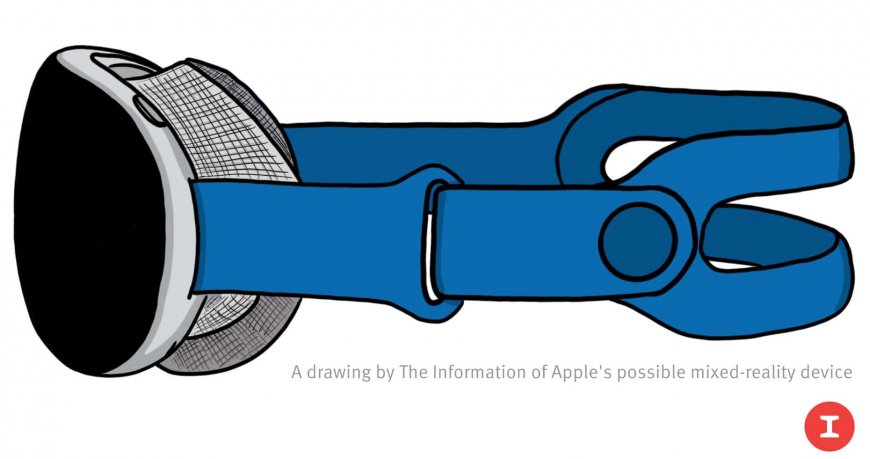
Long-term comfort: The problem with most VR headsets is that they're not ideal for long-term use. Discomfort generally increases after about 30 minutes. Of course, the more comfortable the headset is from the start, the longer you'll be able to keep going.
If Apple can design the AirPods Pro in such a way that you can forget they're there, it can certainly ensure its mixed reality headset is as pro-comfort as possible.
Solid battery life: Currently, the battery life on standalone headsets isn't great. The Oculus Quest 2 only lasts two to three hours, depending on what you're doing. We want Apple's VR and mixed reality headset to offer at least this much battery life, but ideally more.
A focus on fitness: With possible integration with Apple Fitness Plus and the Apple Watch, the Apple headset could be a game changer for fitness. You could use the device during workouts and see your progress as you follow along with personal trainers.
Proper AR: If Apple is going to kick-start its wearable AR efforts with a mixed-reality headset, we want to see some proper AR features. Users will always be aware that the headset is in place, but Apple should, at the very least, do everything it can to make sure that any see-through AR functionality is as realistic as possible. That means good image quality, no noticeable lag, and a good field of view.
No gimmicks: If the mixed reality headset really is a developer device that's being released to the public, the least Apple can do is make sure there's a reason to have one. Don't release the headset for the sake of it, especially if it really is that expensive. Give people an actual reason to pick one up for themselves, beyond the logo.
